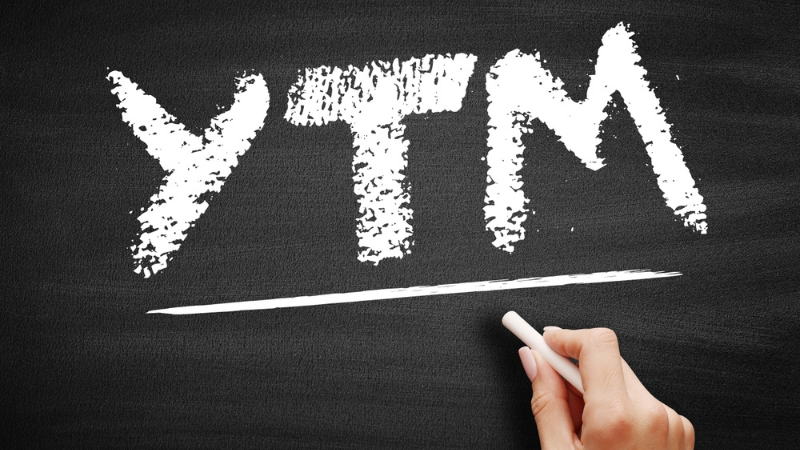
Most individuals invest with the sole purpose of savings taxes. But when the investment is also risk-free, it is like a match made in heaven in the world of investments. Are you looking for such investments too? Then look no further, the answer is tax-free bonds. Learn all about tax-free bonds and how to invest in them in this blog and earn tax-free returns on your investments.
Read More: What are bonds and bond yields?
What are tax-free bonds?
Tax-free bonds are debt instruments and offer a secure and tax-efficient investment option. These bonds are usually issued by the Government of India or their various departments which are generally considered to have a low risk of default. Tax-free bonds are issued for a fixed maturity period which usually ranges from 10 years to 20 years.
The rate of interest on these bonds is also known as the coupon rate and is fixed at the time of issuance. These rates tend to be higher than what traditional savings accounts or fixed deposits offer. The primary appeal of tax-free bonds lies in the income tax exemption on the interest earned. Investors can benefit from not having to pay income tax on the interest income they receive from these bonds. This makes them more appealing for individuals in higher income tax brackets who want to decrease their tax liability while still receiving a reliable income.
While tax-free bonds have fixed maturity periods, they are also listed on stock exchanges, providing some liquidity. Investors can choose to sell them on the secondary market before maturity if they require access to their investment, although the selling price may fluctuate based on market interest rates.
What are the features of tax-free bonds?
Tax-free bonds come with many features which make it an attractive option for investors. Some of these key features are mentioned hereunder.
Exemption from tax
Tax exemption are two words that are dear to every investor. Income from bonds is usually taxed under the head ‘Income from Other Sources’ and is taxable at the applicable slab rates in the hands of the investors. However, income from tax-free bonds in the form of interest income is exempt from taxes. This makes it particularly attractive for investors as the overall returns are not reduced due to taxation.
Risk-free investment
Tax-free bonds are renowned for their safety and low risk. They are typically issued by government entities or organizations with government backing, which ensures a high level of creditworthiness. Consequently, there is a minimal likelihood of these issuers defaulting on their interest payments or the return on principal investment. As a result, tax-free bonds are often considered a secure and dependable investment choice making them an ideal investment option for risk-averse investors.
Source of fixed income
Tax-free bonds offer investors a dependable and fixed source of income. The interest rate is predetermined at the time of bond issuance and remains constant throughout the bond’s tenure. Moreover, the interest income is received at fixed intervals and this feature ensures that investors receive regular interest payments. Tax-free bonds, therefore, are an appealing option for individuals seeking a consistent and predictable income stream.
Lock-in period
Tax-free bonds usually come with a fixed tenure or maturity period, which can range from 10 to 20 years or more. During this lock-in period, investors cannot redeem the bonds before maturity without incurring penalties. This long-term nature of tax-free bonds makes them suitable for individuals with a long investment horizon and those looking to lock in a fixed income for an extended period.
Liquidity
While tax-free bonds have a lock-in period, they do provide investors with certain liquidity options. Investors can trade these bonds on stock exchanges, enabling them to sell their bonds to other investors if the need arises to exit the investment before maturity. However, it’s important to note that the liquidity and pricing of tax-free bonds in the secondary market can be influenced by prevailing market conditions.
No maximum ceiling on investment
Tax-free bonds offer the advantage of not having an upper limit on the amount you can invest. This characteristic makes them accessible to a wide range of investors, from retail investors to high-net-worth individuals who may be interested in tax-efficient avenues for investing substantial sums of money.
Top tax-free bonds in India 2023-24
NHAI :The National Highways Authority of India (NHAI) Tax-Free Bonds provide tax-free interest income to investors. With a fixed interest rate of up to 7.30%, these bonds have a maturity period of 10, 15, and 20 years.
Power Finance Corporation: Investors can also consider the Power Finance Corporation (PFC) Tax-Free Bonds, which offer tax-free interest income with a fixed interest rate of up to 7.15%. These bonds have a maturity period of 10, 15, and 20 years.
Rural Electrification Corporation: The Rural Electrification Corporation (REC) Tax-Free Bonds are another option, providing tax-free interest income with a fixed interest rate of up to 7.13%. These bonds have a maturity period of 10, 15, and 20 years.
Indian Railway Finance Corporation: For those interested in investing in the Indian Railway sector, the Indian Railway Finance Corporation (IRFC) Tax-Free Bonds offer tax-free interest income with a fixed interest rate of up to 7.34%. These bonds have a maturity period of 10, 15, and 20 years.
Indian Renewable Energy Development Agency (IREDA):Investors looking to support renewable energy can consider the Indian Renewable Energy Development Agency (IREDA) Tax-Free Bonds, which offer tax-free interest income with a fixed interest rate of up to 7.15%. These bonds have a maturity period of 10, 15, and 20 years.
Other popular tax-free bond options in India include those issued by Housing and Urban Development Corporation (HUDCO), National Housing Bank (NHB), and the Indian Railway Catering and Tourism Corporation (IRCTC).
How to buy tax-free bonds?
Investors can invest in tax-free bonds either through online mode or offline mode. The government usually issues these bonds in tranches and the subscription period is opened for a brief period. Investors need to furnish their basic KYC details like their PAN Card along with other identity proof and address proofs.
Investors can directly subscribe to these bonds through the designated website as notified by the issuer or through the registered broker. The offline mode of subscribing to these bonds is through the designated bank branches or designated post offices.
Similarly, post closure of the issue period of these bonds, investors can buy them in the open market. This is known as the secondary market where investors can buy these bonds as they are traded on the stock exchanges. The order for the tax-free bonds can be bought through the registered brokers or through the online portal provided by them.
How to redeem tax-free bonds?
Redeeming the tax-free bonds refers to exiting the investment before or after the maturity of the bond. This is a straightforward process, but their tenure and tax implications have to be considered before redeeming the bonds. Typically locked in for 10 to 20 years, these bonds cannot be prematurely withdrawn; however, investors have the option to trade them on stock exchanges if liquidity is needed before maturity. It’s important to note that the issuing entity cannot buy back these bonds.
When investors sell tax-free bonds within one year of purchase, any profit incurred is subject to taxation as per their income tax slab under Section 112 of the Income Tax Act. These gains are categorized as short-term capital gains and are taxed at their applicable income tax rate. On the other hand, if investors hold the bonds for over one year before selling, the gains are treated as long-term capital gains, attracting a flat tax rate of 10% without the benefit of indexation,
Conclusion
Tax-free bonds are an important investment instrument and allow investors to gain risk-free and tax-free interest over the tenure of the investment. These bonds are effective in balancing the overall risk in the investment portfolio while also providing them with the much needed liquidity which is also a key component of an investment.


























